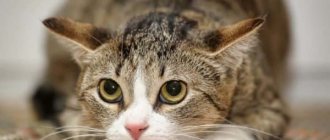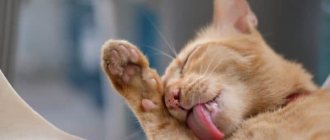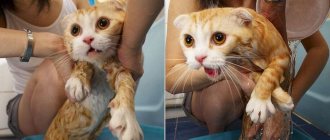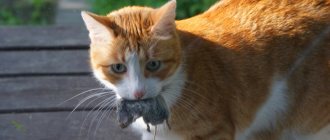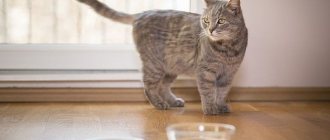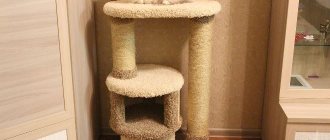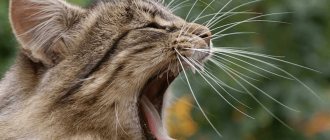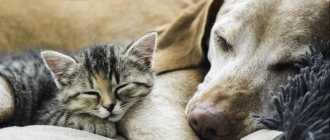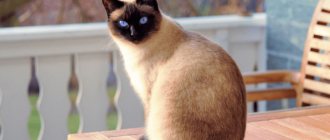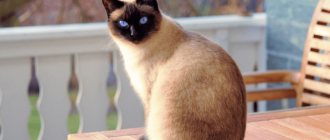Anyone who has interacted with a friendly cat or examined a cat's tongue up close knows that it is unique in many ways. The cat's tongue is truly unusual, it is long, flexible and has a very rough surface. In addition, it is also a multi-functional tool. Scientists studying a cat's tongue under a microscope have only recently discovered just how amazing it is in terms of its anatomy and abilities.
The structure of a cat's tongue
Have you ever watched a slow motion video of a cat drinking water? Its tongue acts like a tiny ball that draws water from the bowl and pushes it in a column directly into the animal's mouth. The jaws tighten around the thick water and she swallows. This all happens too quickly for the human eye to see the process in real time, but looking at the slow motion video, you'd think this technique seems to defy gravity!
There is something in common between cat and human tongues: they are both composed of transverse and longitudinal muscles. They provide mobility to this organ, which can move in different directions. A special arrangement of muscles helps these animals fold their tongue like a ladle.
Muscle tissue is covered with mucous membrane. On the outer shell there is a layer of keratin, which performs a protective function. Beneath it are capillaries that supply the organ with blood. Receptors on the surface allow you to detect bitter, sour and salty. However, cats do not distinguish sweet taste, since scientists have not found the corresponding formations in them.
The papillae on the surface of the tongue, similar in appearance to denticles, are opaque, covered with keratin, and protrude from expanded bases covering the tongue. The teeth are longer in the center and gradually become shorter on the sides and front.
Cat tongue close up
Why do cats have rough tongues?
If your pet has ever licked your hand, you will certainly feel the rough surface of his tongue. The feeling of being touched with sandpaper is caused by the papillae located on the surface of the tongue. They play an important role in helping cats stay clean and healthy. They face back towards the animal's throat, and this peculiar anatomy of the papillae allows these animals to tidy up their fur (much better than a comb). It also allows our carnivorous friends to peel meat from bones using only their tongues.
These bumps are hook-shaped and give that rough, bristly appearance that causes a “sandpaper effect” when in contact with the skin. This special structure is a kind of survival factor: by removing any dirt from the fur, the animals eliminate all traces of odors that could jeopardize hunting or could turn them into prey for other animals (there's a reason they lick their lips after they've finished eating).
Reasons for appearance
Cyanosis can give the skin or mucous membranes a bluish or reddish tint, this is due to a lack of oxygen or a decrease in hemoglobin. Blueness can be caused by hereditary diseases, congenital heart disease, various respiratory diseases, and exposure to certain chemicals. Cyanosis in cats is usually a warning sign for owners and veterinarians.
The causes of melanocytic skin hyperchromia in cats are still unknown. But veterinarians associate this factor with heredity. It is known that there are cats predisposed to this phenomenon. In red individuals, dots are most common in the mouth, and they can be not only black, but also dark blue or dark brown. Regardless of color, the dots do not pose a danger and do not indicate internal disorders.
What can be seen under a microscope
B0009732 Cat tongue, cross section
The first composite image of a section of a cat's tongue applied to a microscope slide is over a hundred years old. Yellow stripes are horizontal muscles, sparse purple stripes are vertical muscles, and black swirls are capillaries. These blue-violet spots on the jagged edge represent polarized light interacting with the keratin. A microscope image of a cat's tongue was taken by David Linstead.
Enlarged photo of a cat's tongue
This photo of a cat's tongue shows a 3mm cross section. This is a picture of 30 microphotographs taken using a digital camera and microscope. A close-up of the serrated ridge on top of the plate on the cat's tongue is the same papillae located on the surface. Under a regular microscope, a cat's tongue up close looks like a rough surface filled with thousands of tiny teeth, which is clearly visible in the photograph.
Functions of a cat's tongue
Mother Nature has equipped every cat with an anatomical Swiss Army knife. Strong and incredibly durable, used for eating and grooming, this tool is that very language. It's easy to underestimate how important he is to her health and happiness. Not only does it have a rough texture that helps with grooming and eating, but it has many other beneficial features.
Cat's sense of taste
Cats have fewer taste buds compared to humans. This affects their perception of tastes: they do not recognize sweet tastes, but they like savory tastes. While the human tongue is primarily designed for eating and pleasure, in cats this organ works differently.
Interestingly, they can taste adenosine triphosphate (ATP), which is found in living cells such as meat, but humans cannot. This is thought to naturally encourage the furry carnivores to eat meat, which is why they are carnivores. This means that they can consume other types of food such as vegetables and grains, but their diet should consist mainly of meat.
Natural wool brush
The cat washes itself
If you have a cat, then you probably know how carefully it takes care of its fur. Most of them spend a lot of time every day taking good care of themselves. Due to the special structure and presence of papillae, the tongue performs the function of a comb.
Unfortunately, this feature also has a downside. Because of their shape, these hooks tend to catch any hairs that fall out during grooming. What gets stuck on the tongue is usually swallowed. This is why many pets sometimes have to get rid of hairballs that accumulate in their stomach.
Other language properties
A cat can only drink thanks to this organ: they bend it backwards, making it look like a spoon, dipping only the tip into the water and lifting it up, sucking up the water at incredible speed before it can fall back into the bowl. This movement is very fast; in a second she manages to repeat it four times.
Seals use their tongue to regulate their body temperature. When they are hot, they cool down and restore their body temperature by licking themselves: in doing so, they moisten the fur, the saliva evaporates, thus reducing body heat.
The tongue plays an important role in the chewing process. As we mentioned earlier, thanks to this structure, meat is more easily separated from the bones of the victim, in addition, this organ helps to eat faster.
Along with the ability to detect taste, a cat's tongue is also able to sense texture and temperature. These three things - taste, temperature and texture - are the main criteria that determine a cat's food and water preferences.
Language helps strengthen bonds with offspring. Mother cats usually lick their kittens as a sign of affection. In the same way, she helps them stay clean.
The cat drinks water
Pellagra
A disease caused by a lack of vitamin PP and B6 is called pellagra. In cats, this pathology is quite rare and is associated with a monotonous diet. In most cases, hypovitaminosis occurs in animals that eat low-quality dry food in a low price segment.
You might be interested in: Why does my cat have black plaque in her ears?
The composition of such feeds is not balanced and does not always meet the needs of the animal’s body for certain vitamins. Pellagra can also be encountered by street animals that do not have a regular diet and eat whatever they can find. Often cats taken from the street suffer from hypovitaminosis, and the owners cannot immediately understand the reason for the lethargy and drowsiness of their furry pet, as well as dark spots on the tongue.
Pellagra in cats appears as spots on the mucous membranes of the mouth, sometimes spots on the tongue, nose and ears. To make an accurate diagnosis, you should consult a veterinarian, since plaque in the ears and nose may be the result of tick-borne infestation, and spots on the tongue may turn out to be harmless pigmentation.
If the diagnosis is confirmed, treatment is carried out by adjusting the diet. It is recommended to purchase special vitamin supplements for cats, depending on the age of the pet. If the cat eats natural food, the following products should be introduced into the diet:
- liver;
- kidneys;
- sea fish;
- milk;
- carrot.
These products are rich in vitamin PP and quickly eliminate its deficiency. To achieve the best effect, it is necessary to combine a therapeutic diet with taking special vitamin supplements. The recommended dosage of vitamins PP and B6 is up to 5 mg per kilogram of pet weight.
Features of scientific data
Bioengineering scientists say a cat's tongue works like a very smart comb. Research results. The research they conducted does more than just provide insight into how one of the world's most popular pets keeps its body clean. This inspired them to create a new type of brush, TIGR (Tongue-Inspired GRooming). Studded with small, curved, flexible spikes just like a cat's tongue, the TIGR prototype easily removes loose hair or fur from people and cats, but can be cleaned with a simple swipe of a finger. This will also help make cats less allergenic, since this brush removes dead skin particles well (they contain protein that causes allergies).
Researchers have discovered that these papillae on the tongue allow cats to deliver saliva directly to the skin, which could encourage new approaches to cleaning and draining fluids on all kinds of hairy, furry and uneven surfaces. Transporting liquids is a challenge not only for animals, but also for engineers. Research shows that scientists can use the physics of basic animal behavior to answer many fundamental questions.
Researchers have found that the orientation of the papillae on the tongue is not constant. High-speed videos of domestic cats grooming themselves have revealed that the papillae rotate when the cat's tongue collides with hairballs.
This flexibility, scientists say, is key to what allows such relatively short spines to clear not only the longer, sparser outer layer of fur, but also the thick, downy undercoat next to the skin. The researchers' measurements showed that even relatively light tongue pressure during grooming allowed all types of cats to groom themselves down to the skin.
Note that the only exception is the Persian cat, a domestic breed that needs to be brushed daily to prevent possible coat problems.
Source of taste impressions
The tongue serves cats not only to take care of their own appearance. It allows them to enjoy food or determine its inconsistency with their taste preferences, which are very selective. The slightest change in the consistency or temperature of the food, not to mention a change in its variety, can lead to a categorical refusal to eat.
In addition, the location of the papillae and the amazing flexibility of the tongue allow the purr to easily capture even liquids and porridge-like food, using this organ as a spoon.

